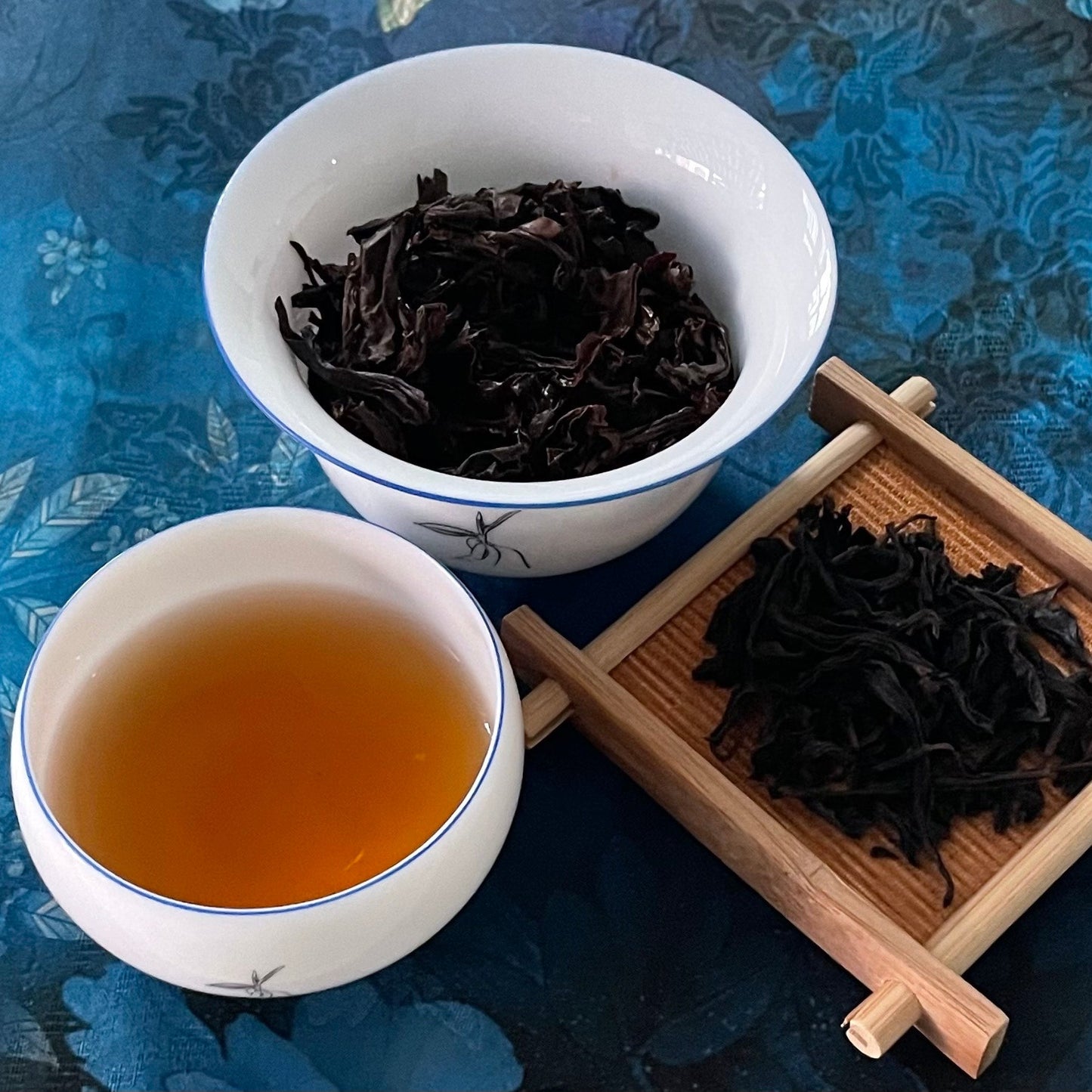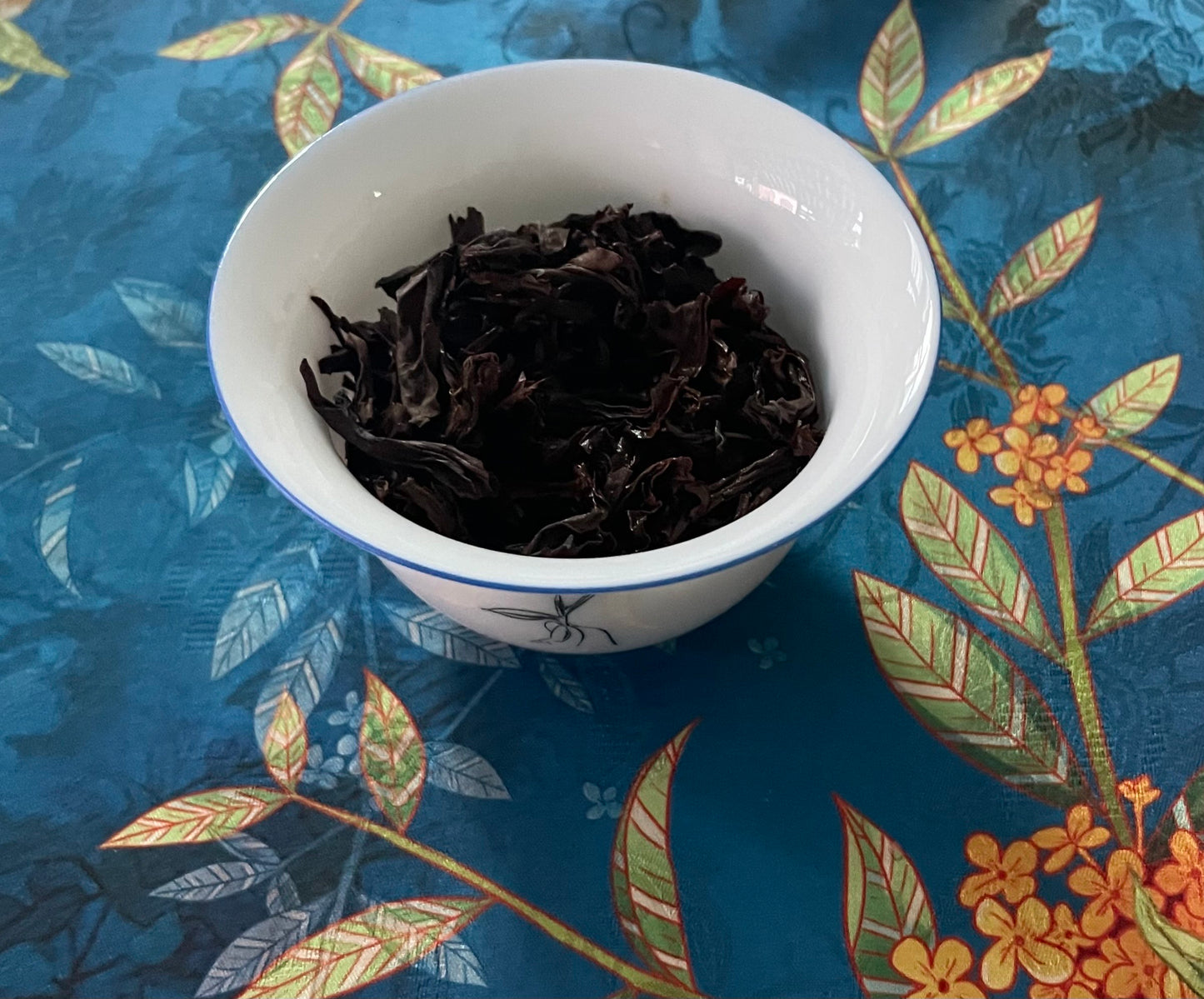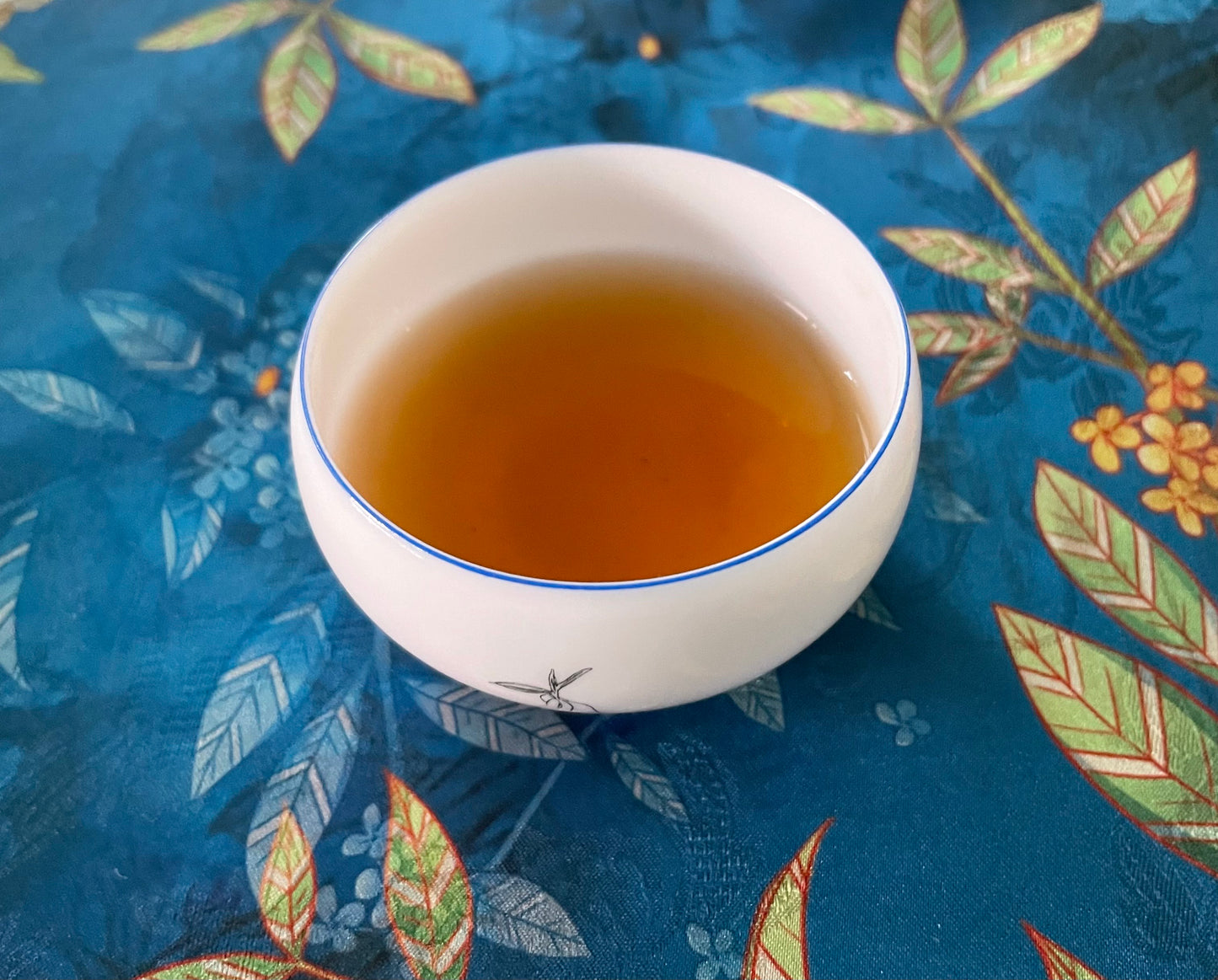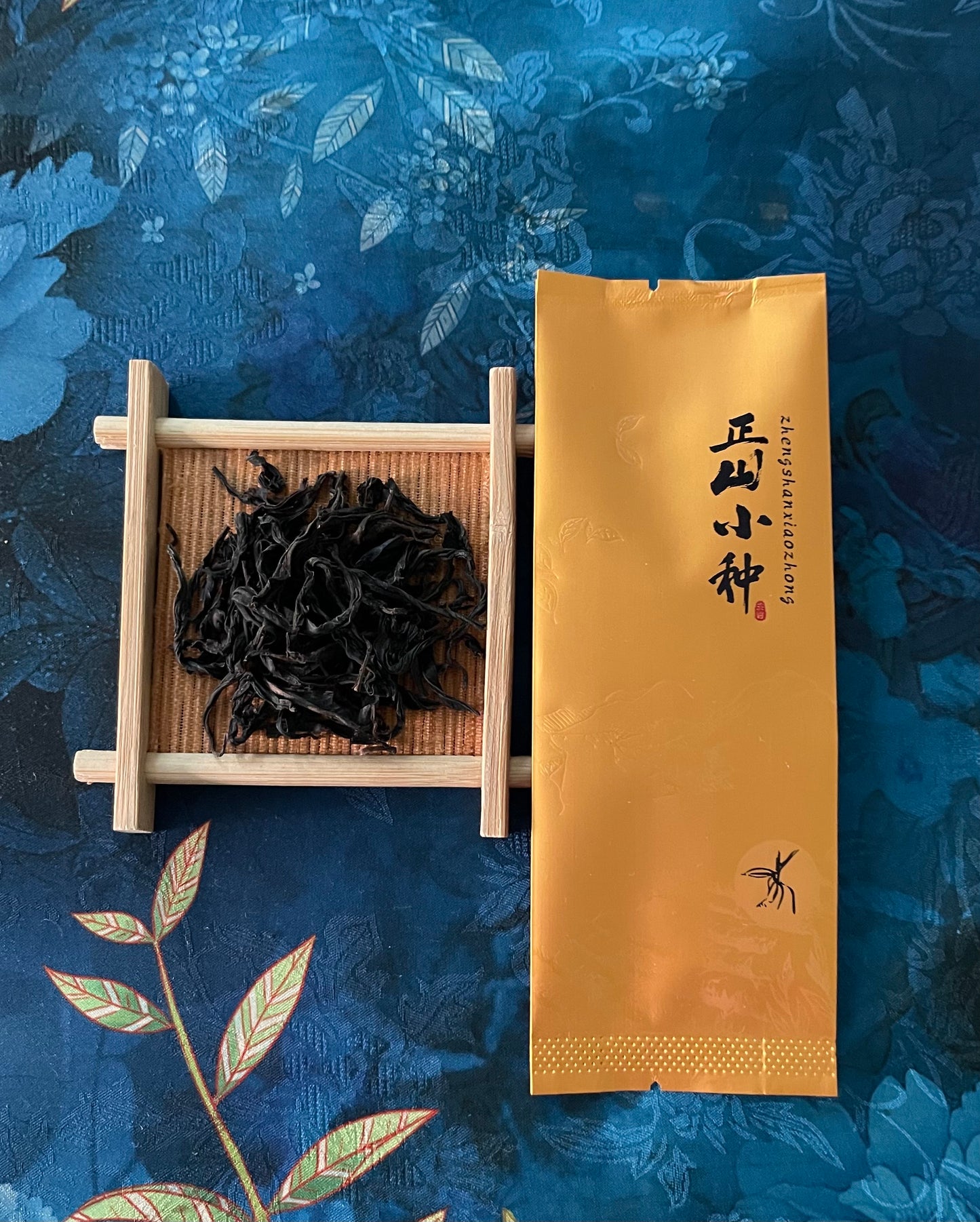Tongmuguan Smoked Zhengshan Xiaozhong
Tongmuguan Smoked Zhengshan Xiaozhong
桐木关正山小种
Smoky, Woody
Couldn't load pickup availability
Share




Zhengshan Xiaozhong (or Lapsang Souchong) is a very famous black tea hailing from the area of Wuyishan (武夷山) in Fujian, China. It is characterised by its small leaves, red liquor, and its overall unique smoky taste.
Zhengshan Xiaozhong was the very first tea to be introduced to the west. Grown in the secret valley of Tongmuguan, this area is very remote with a perfect environment for growing tea. Furthermore, it is blocked off from foreigners who do not have contacts inside the village. Hailed as the birthplace of black tea, Tongmuguan is a historic area producing a historic tea worthy to be enjoyed.
What is so special about this Zhengshan Xiaozhong is that it is not only from Tongmuguan, but it is made using an ancient technique not as prevalent today. The technique, known as smoking, allows the tea leaves to develop complex smoky flavour notes and aromatics. The wood used to smoke the tea leaves typically consist of pine wood, with the tea leaves being smoked in a 3-storey building called a “Qin Lou”. Combining this ancient technique with the hands and efforts of a tea-master 20 plus generations in the making, we have this wonderful Zhengshan Xiaozhong ready for your taste buds to enjoy!
Tea Information
- Origin: Tongmuguan
- Elevation: above 1000m
- Source: Direct from a 24th-generation farmer, since 1568
- Organic?: No
Map
Brewing Guide
Gongfu Brewing:
- Leaf-to-water ratio: 5g/100ml
- Temperature: 90°C/194°F
- Steeping time: 30s, +15s for each subsequent steep
Western Brewing:
- Leaf-to-water ratio: 5g/400ml
- Temperature: 90°C/194°F
- Steeping time: 3m, +1m for each subsequent steep
Grandpa Style:
- Leaf-to-water ratio: 5g/300ml
- Temperature: 90°C/194°F
- Steeping time: 2m30s, top up to taste
Don't know anything about these brewing styles? Fret not! Read our "How to Brew Chinese Tea" article here!
* Ultimately, experiment with the different parameters to find what works for you. If you think it's too bitter, reduce the temperature. If it's too strong, reduce the number of leaves used. This is just a guide with rough parameters to get you started.
Media







